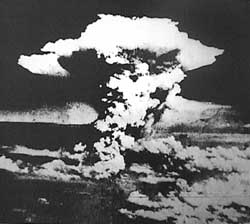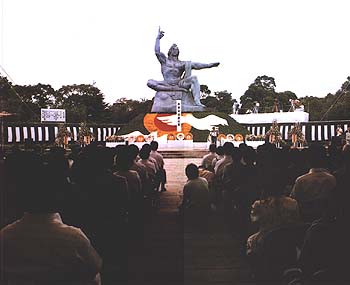I feel sorry for the electric customers in Georgia. While everyone else in the nation is busy implementing the new Carbonless Economy or going green; Georgia Power is going (pick a color, say) BLACK. With estimated cost ranges of 4 – 8 billion $$, are they, what (?), shocked they got no bids. You can see the future in your little 8 Ball…Let’s see, cost overruns, construction delays, and by the time it comes to fuel it – no uranium. Alberta just banned the mining of it. Australia is on its way to doing the same. Australia has seen the future and it is Hot Rocks. Drilling down to the Earth’s core. Not putting hot rocks in a reactor.
http://www.bizjournals.com/atlanta/stories/2008/05/05/daily56.html?ana=from_rss
Wednesday, May 7, 2008
Georgia Power nuclear proposal rolls along
Atlanta Business Chronicle
eorgia Power reported Wednesday it has garnered no bids from its 2016-2017 base load capacity request for proposals.
Two weeks ago, it signed an engineering, procurement and construction contract with Westinghouse Electric Co. and The Shaw Group Inc.‘s Power Group. At that time, Georgia Power said it would submit a nuclear self-build option for consideration. Georgia Public Service Commission (PSC) rules require market bids to be compared with self-build proposals, but no market bids were received, Georgia Power said.
Georgia Power, a unit of Atlanta-based Southern Co. (NYSE: SO), said the self-build nuclear proposal will be reviewed by the Georgia PSC’s independent evaluator before the company submits a final recommendation to the Georgia PSC on Aug. 1 for approval. A final certification decision is expected in March 2009.
If certified by the Georgia PSC and licensed by the Nuclear Regulatory Commission, the two Westinghouse AP1000 units, with a capacity of 1,100 megawatts each, would be built at the Vogtle Electric Generating Plant site near Waynesboro, Ga., and would be placed in service in 2016 and 2017.
“Demand for electricity continues to grow in the Southeast and in Georgia,” said Mike Garrett, Georgia Power president and CEO. “While we will continue to increase our emphasis on energy efficiency and renewable energy sources, we must also add large-scale base load generation to meet growing energy needs. While nuclear power plants cost more to build, they now have lower fuel and operating costs than fossil fuel plants. Nuclear energy would add needed diversity to Georgia Power’s fuel mix at a time when fossil fuel prices are increasing significantly.”
:}
Once you decide to be bad, I guess you might as well be very bad:
:}
http://www.cleanenergy.org/takeAction/detail.cfm?ID=65
WHY THE GEORGIA PSC SHOULD REQUIRE GEORGIA POWER TO PUT ENERGY EFFICIENCY AND RENEWABLE ENERGY AS A TOP PRIORITY:
- Energy efficiency and renewable energy protect against increasing fossil fuel and natural gas prices
- Hedge against energy supply shortages and disruptions
- Avoid a growing dependence on natural gas
- Reduce harmful air pollution and excessive water usage
- Create local energy markets and increase employment
- Avoid the high costs of building new conventional electric supplies.
Our Energy Security and Reliability is at Stake.
Currently, most of the energy used to power our homes and businesses comes from outside Georgia and the Southeast. There are no petroleum, natural gas, or uranium mines and reserves in the Southeast. According to the Energy Information Administration, Georgia’s electric power sector spent approximately $1.5 billion buying out of state coal and natural gas in 2003.(1)
Businesses and the Public Pay the Heavy Price.
Georgia and its utilities lag behind much of the country in investments in energy efficiency. There is a lot of wasted energy that all utility customers must pay for when the utility builds more transmission lines and power plants than are necessary. As fuel costs increase, consumers pay even more for this wasted energy.
Air Quality and Human Health Suffer.
Our current energy supply causes a great deal of damage to our health. Here are a few examples of the effects:
- Soot and smog-forming nitrogen oxides are created from fossil fuel plants and engines. These can harm children’s lung development and lead to asthma attacks, heart attacks and stroke.
- Coal fired power plants release air-borne mercury that ends up in lakes, rivers and streams. Neurological damage is linked with eating mercury-laden fish.
- Tritium, a radioactive isotope of hydrogen that is produced at all nuclear reactors, acts like water in the body and can pass across the placenta to affect a developing fetus.
Water for Coal and Nuclear Plants Competes with Cities, Businesses and Farms.
Coal and nuclear power plants are heavy water users. In 2001 nuclear Plant Vogtle used approximately 64 million gallons of water a day from the Savannah River and only returned 21 million gallons per day. Coal plant Scherer withdrew 59 million gallons of water a day from Lake Juliette (2). These and other fossil fuel and nuclear plants compete with local industries—from the carpet industries of Dalton to the peach growers in Tifton—for much needed water. The burden that our energy system places on the state’s water supplies will become even more severe if Georgia Power’s proposed plans for new power plants are carried out.
GEORGIA’S UTILITY REVIEW PROCESS:
Georgia law requires that Georgia Power submit an Integrated Resource Plan (IRP) to the Georgia Public Service Commission (PSC) every three years for approval. The PSC is charged to review the company’s plan and to approve it or require revisions.
The centerpiece of the Georgia Power plan:
- Build new nuclear reactors at Plant Vogtle near Augusta which would divert massive amounts of water away from the Savannah River, competing with other needs, as well as create more radioactive waste that cannot be disposed of safely;
- Expand and upgrade its transmission lines to support several new power plants and increased electricity demand;
- Build a new gas pipeline through properties from Union City to Smyrna.
The secondary part of the plan includes:
- Minimal energy efficiency measures through “pilot programs” with limited investment;
- Develop only about 200 MW of new renewable energy that amounts to less than 1% of Georgia Power’s current energy capacity (most of the company’s “green power” is currently landfill gas).
To view Georgia Power’s proposed plan and responses by independent experts, go to http://www.psc.state.ga.us/ (enter #24505 in the docket search box, and view documents filed on Jan. 31, 2007 by the company and documents filed by other parties on May 4 and May 7).








